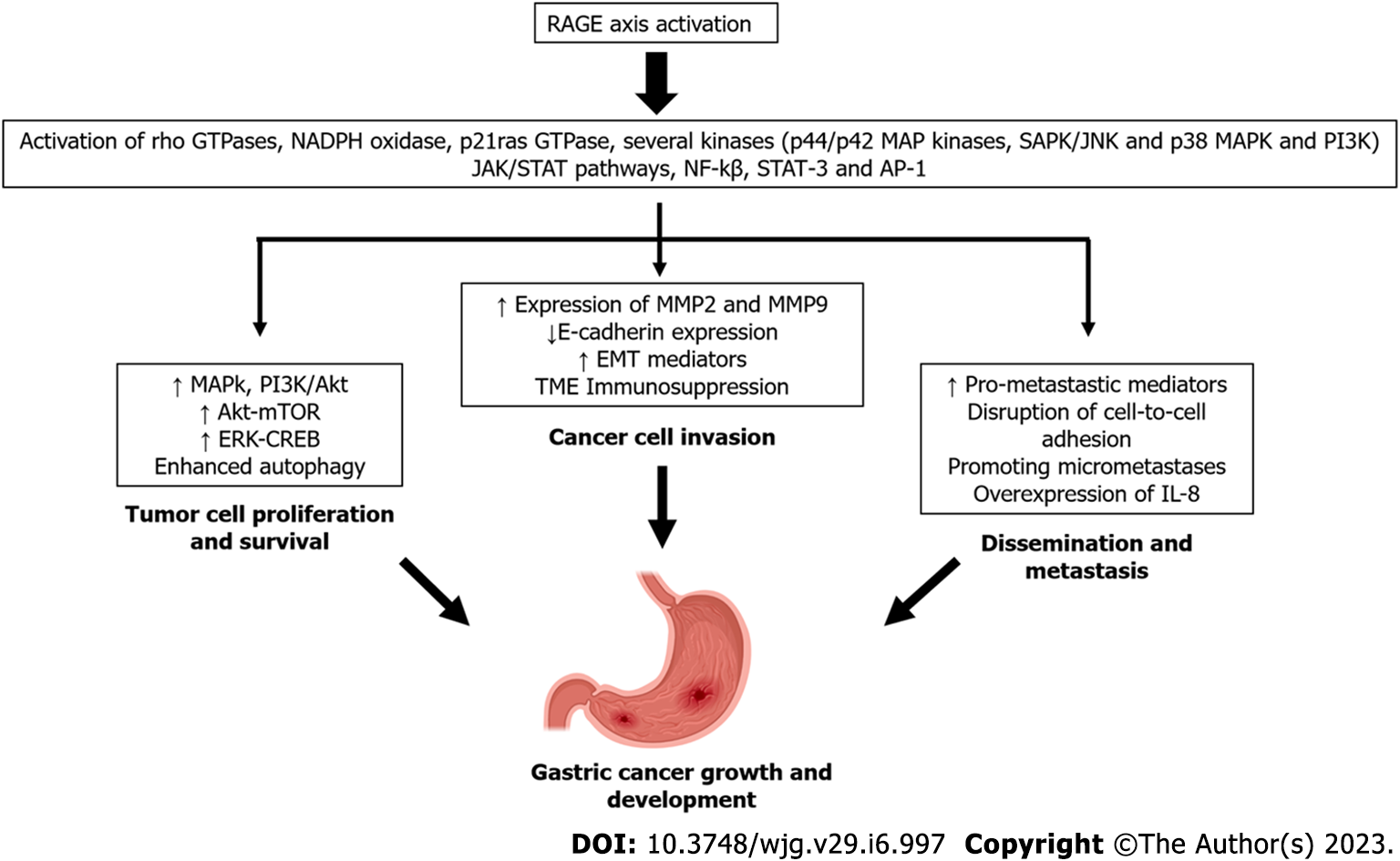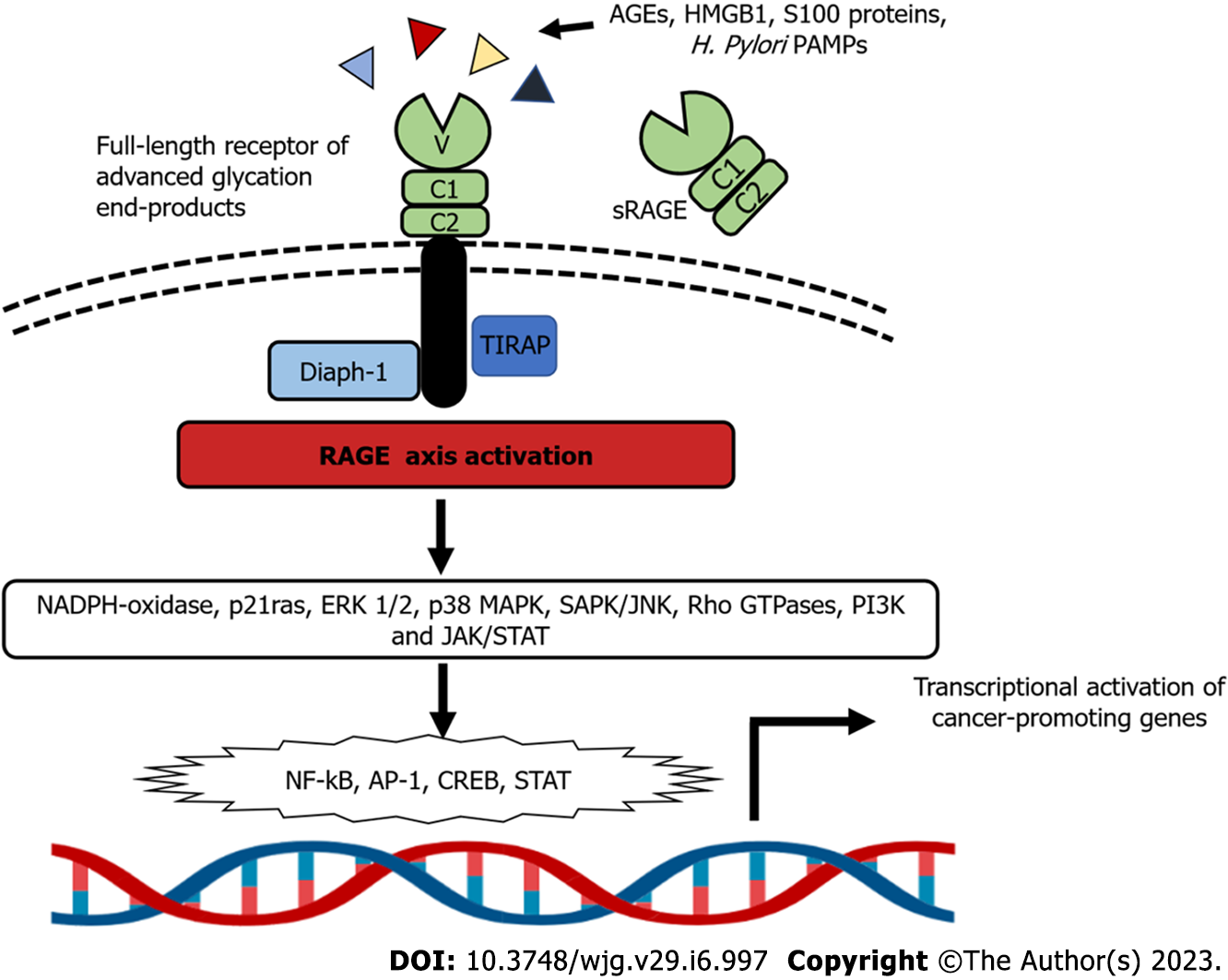Copyright
©The Author(s) 2023.
World J Gastroenterol. Feb 14, 2023; 29(6): 997-1010
Published online Feb 14, 2023. doi: 10.3748/wjg.v29.i6.997
Published online Feb 14, 2023. doi: 10.3748/wjg.v29.i6.997
Figure 1 Receptor for advanced glycation end products engagement by several ligands such as advanced glycation end products, high mobility group box 1, S-100 calgranulin family proteins, and pathogen-associated molecular patterns from Helicobacter pylori.
Receptor for advanced glycation end products (RAGE) activation by these various ligands triggers complex signaling cascades and consequently, the activation of a gene transcriptional profile that supports growth and development of gastric cancer. Soluble forms of RAGE (sRAGE) function as decoy receptors and do not activate RAGE signaling. Some adaptor molecules, such as mDia1 and toll-interleukin 1 receptor domain-containing adaptor protein, are required for optimal signaling. AP-1: Activator protein-1; CREB: Cyclic-AMP response element binding; EMT: Epithelial-to-mesenchymal transition; ERK: Extracellular signal-regulated kinase; H. pylori: Helicobacter pylori; IL-8: Interleukin-8; JAK: Janus kinase; JNK: c-Jun n-terminal kinase; MMP: Metalloproteinases; mTOR: Mechanistic target of rapamycin; NF-ҡB: Nuclear factor-kappa B; SAPK: Stress-activated protein kinase; STAT: Signal transducer and activator of transcription.
Figure 2 Overview of RAGE-dependent intracellular signaling.
RAGE binding triggers myriad mechanisms that support tumor proliferation and survival, invasion, and metastasis. AGE: Advanced glycation end product; AP-1: Activator protein-1; CREB: cyclic-AMP response element binding; ERK: Extracellular signal-regulated kinase; HMGB1: High mobility group box 1; JAK: Janus kinase; JNK: c-Jun n-terminal kinase; NF-ҡB: Nuclear factor-kappa B; PAMP: Pathogen-associated molecular patterns; RAGE: Receptor for advanced glycation end products; SAPK: Stress-activated protein kinase; STAT: Signal transducer and activator of transcription; TIRAP: Toll-interleukin 1 receptor domain-containing adaptor protein.
- Citation: Rojas A, Lindner C, Schneider I, González I, Morales MA. Contributions of the receptor for advanced glycation end products axis activation in gastric cancer. World J Gastroenterol 2023; 29(6): 997-1010
- URL: https://www.wjgnet.com/1007-9327/full/v29/i6/997.htm
- DOI: https://dx.doi.org/10.3748/wjg.v29.i6.997










